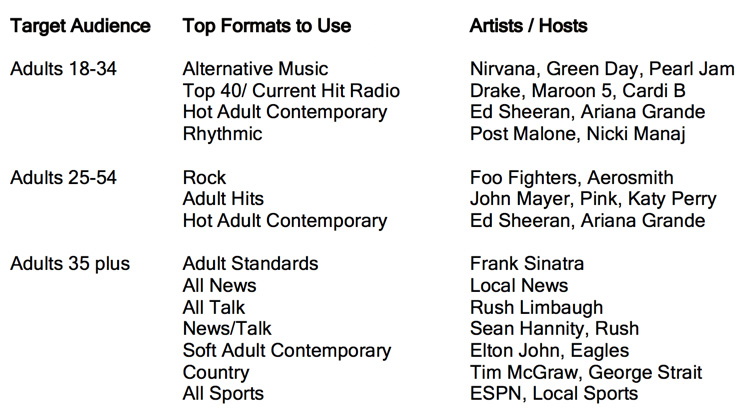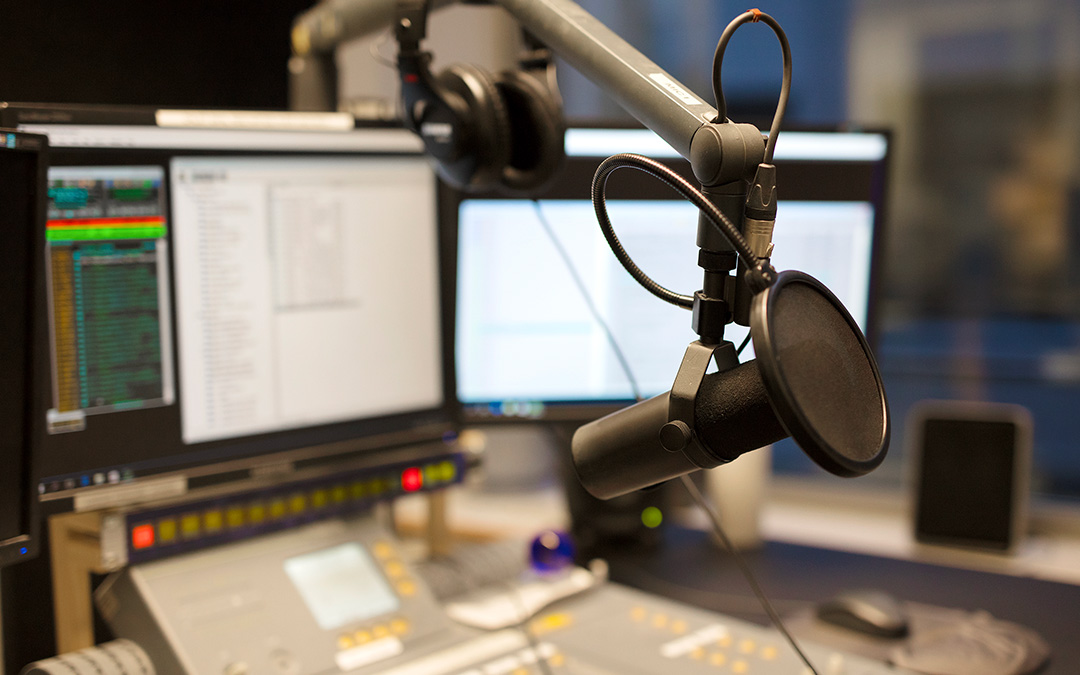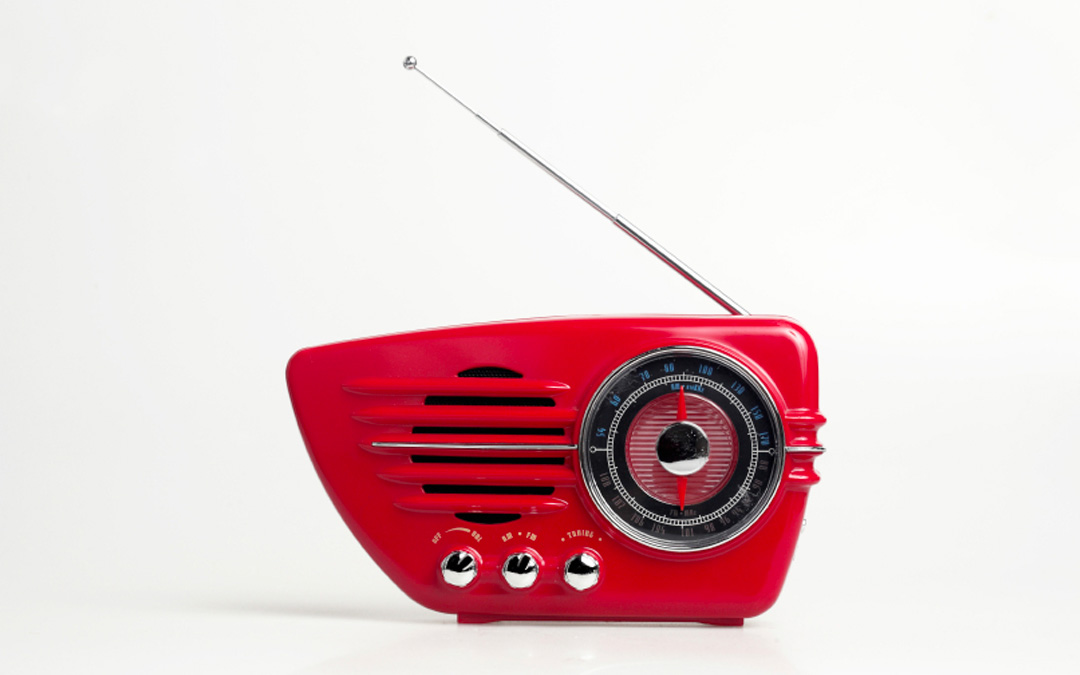
How to Make Your Radio Advertising Work: Radio Advertising Agency “Secret Sauce”
According to the Nielsen Total Audience Report, radio reaches 92% of Americans age 18+ each and every week. To compare that impact with other media sources, smartphones reach 83% of Americans each week; TV reaches 89% of Americans each week; and computers reach 50% of Americans each week. And this is happening while other advertising outlets like cable TV are losing audience–a phenomenon known as “cord-cutting.”
Radio is growing.
Author Annette Malave, SVP of the Radio Advertising Bureau, reports “The only medium noted as not experiencing declines, or better positioned as having a consistent audience reach, was radio – around 90% for at least the past nine years.” Each other medium noted within the release – newspapers, cable TV, network TV, local TV and digital-native news – had declines ranging from 5% to 15%.”
Malave goes on to report how Pew Research Center’s “5 Facts” mean a lot to radio. So in keeping in Pew Research Center’s “5 Facts” format, here are top five facts (along with supporting data) about radio:
1. Radio’s listening audience is growing.
- June 2014: radio reached 244 million people weekly1
- June 2018: radio reached over 247 million people weekly1
2. Radio reaches consumers on the go – wherever or whenever they want it – live or via streams, apps, podcasts and across devices like smartphones, tablets, laptops, computers, smart TVs or smart speakers.
- Online radio listening is growing to 180 million people monthly2
- Podcast listening growth to 124 million people2
3. Radio has an emotional connection unlike any other medium.
- 87% say that broadcast radio personalities make them laugh4
- 64% would follow their radio personality if they went to another radio station4
- 61% stated that the personalities on radio stations make them think4
- 51% see radio stations personalities or DJs like a friend/family4
- 46% trust radio station personalities – they are opinion leaders4
4. Radio is local.
- 84% of listeners believe that radio’s primary advantage is its local feel.3
5. Radio delivers results.
- Radio delivers a $10 to $1 ROI5
- Radio delivers a 29% lift in incremental Google search6
- Radio delivers campaign awareness lift when combined with other media7
Since Radio reaches 92% of Americans age 18+, that makes radio America’s number one Reach Medium. So, the questions are: “How can I make radio work for my business?” and “What do I need to know to make my radio campaign successful?”
Here are Q&As to make your radio campaign successful.
Q: How do I make a radio commercial that’s effective?
A: Create your ads with the customer in mind. Know the problem that you are solving and develop your spots to deliver the solution. Customer-centric creative needs to present the problem, provide the customer with a clear solution in words and terms that the customer can easily understand “what’s in for them,” create a sense of urgency, and deliver a strong call to action. Great creative is the foundation for an effective radio campaign. According to Radio Recall Research of over 2,500 different radio commercials, neither humor nor music provided any help in brand recall. What’s important is that your creative delivers a clear and compelling message that your product or service can help make their life better. Provide proof in your creative and make it easy for them to try it out. Here are what actual radio listeners said they would like to hear in the ads on their favorite radio stations. Based on an online sample of 622 radio listeners ages 18-54, here is what they said would make a compelling radio spot:
- Provide them with information on places to go and things to do (63%)
- Help them learn about local businesses (41%)
- Something that builds in-store traffic (40%)
- Connect them with their local area (39%)
- Prompt online action (38%)
- Create Ads with messages that they retain (38%)
- Tell them why to buy (26%)
(Source: NuVoodoo Media Services proprietary study for RAB, 2013)
Here are some things to avoid in your radio commercials. These elements are guaranteed to make the radio listener turn the station, tune out and probably be angry or feel negative toward your brand. Do these and you are certain to fail with your radio ads:
- Use a police siren or ambulance sound effect.
- Use a record scratch sound effect.
- Use throw-away phrases that people tune out like “Now is the time to buy. Wait. There’s more. We’re #1 in the … business.”
- Use unrealistic language in a slice of life ad. “Hi, Amy. How is your day going?” “Great, Jill. I just called 555-attorney to get start my medical malpractice lawsuit started.”
According to the Psychology of Advertising report in Marketingprofs.com, the emotion of “likeability” is the measure most predictive of whether an advertisement will increase a brand’s sales. Advertising campaigns that performed well had 31% emotional content and 16% rational content.
So, make sure your voiceover talent is friendly and that their voice builds trust. Create an opportunity for a radio listener to like your brand and your offer, even if they don’t need your product or service now. One day they will, and you want them to think of you in a positive way when it’s time to purchase.
Q: How do I break through the clutter? How can I get my customer’s attention?
A. Use 60-second radio spots and not 30-second spots if you really want your spots to generate sales. According to the Radio Advertising Bureau, “60-second spots have a higher recall than 30-second spots. If two commercials are exact in length, then the commercial with the greater amount of words will have higher recall.” Another reason to use 60-second spots over 30-second spots is the value. In television you usually get a 50% discount on 30-second ads vs. 60-second ads. But that is not always the case in radio. Usually radio stations will try to keep an average unit rate of about 65% to 70% for 30s vs. 60s. So, you don’t get half off many times. You don’t always save 50% by using 30-second vs. 60-second spots. As a rule, a 60-second radio spot should contain 160 to 170 words. A 30-second radio spot should contain 80 to 85 words. You want to give the voice talent time to deliver your message in a compelling way and not just read as fast as they can. This will give you time to build the trust and awareness you need for the customer to respond.
Q: How do I reach more customers? How do I stop wasting dollars on ads that don’t work?
A: Target your ad to run on the stations and formats your customers listen to most. As stated before. radio is a reach medium. You can cost effectively reach your audience if you know what format your customers listen to. Here are some guidelines:

Q: How do I make money on my radio advertising?
A: Don’t pay too much for your spots. Advertising rates are negotiable. The station will send you a rate card. But that really is like sticker price on a car. You should be able negotiate based on the actual audience they deliver in the time or daypart you want to advertise:
Standard dayparts are Monday through Friday 6am to 7pm; these are also known as rotators.
Morning Drive is Monday through Friday 6am to 10am.
Mid-Day is 10am to 3pm.
Afternoon Drivetime is Monday through Friday 3pm to 7pm.
Professional media buyers will negotiate based on the cost per thousand (CPM) or Cost per Point (CPP). This is an indicator of the cost to tell one thousand people about your product or service. For example, if the station you are negotiating with delivers 25,000 Average Quarter Hour (the average number of listeners every 15 minutes, noted as AQH) for Adults aged 25-54, you can offer to pay $10 per thousand or $250 per spot. You should be able to negotiate for more aggressive pricing during the first and third quarter of the year and less so during the second and fourth quarter of the year when seasonal demand for inventory is higher.
It’s wise to get a professional media buyer on your side. They know what the market is delivering and usually have relationships that can get you the maximum number of spots and audience for your investment. Radio spot rates are negotiable. You don’t have the pay what’s on the rate card.
Use these guidelines to build a better performing radio campaign. Radio is theatre of the mind. It has held its own with the onslaught of digital media. It’s local. It’s loved. People feel a connection to their favorite hosts. You can use radio’s powerful influence to create awareness, demand and results for your business.
Sources: 1 Nielsen, RADAR 124 and 137, June 2014 and 2018, M-Su 24-hr. weekly cume P12+; 2The Infinite Dial 2018, Edison Research/Triton Digital; 3 Jacobs Media, Techsurvey 2018; 4 Vision Critical/MARU, November 2017; 5 Nielsen Catalina 2014-2016; 6 RAB: Radio Drives Search, 2017, Sequent Partners, Media Monitors, Inf4mation Insights; 7 New Research/IAB, 2016.



